Mayor Justin Bibb on the Lakefront, Downtown Safety, Cleveland Culture and His Future Plans
by Dillon Stewart | Jan. 26, 2024 | 11:00 AM
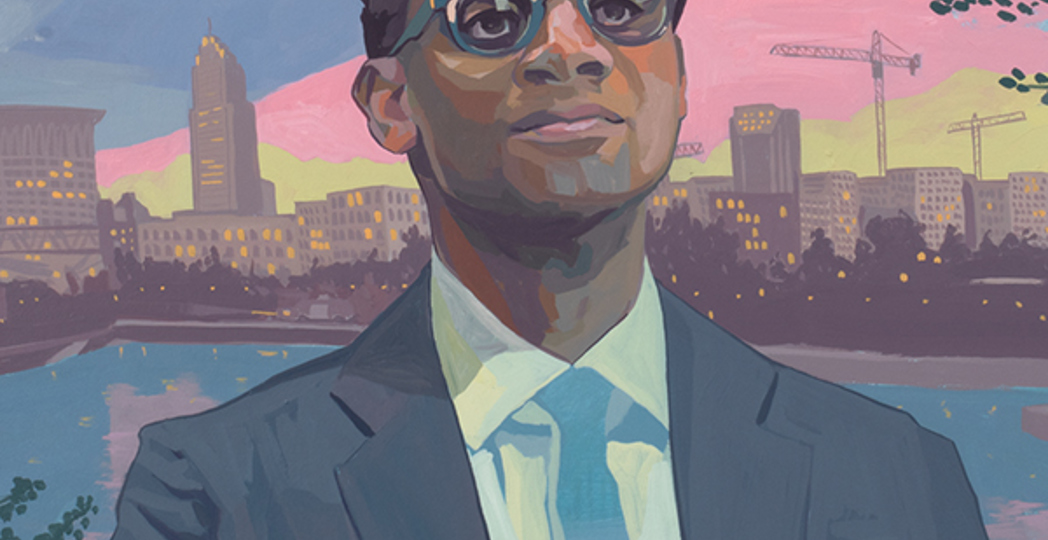
Illustration by Jon Stich, Photos by City of Cleveland Photo Bureau
A few days before Christmas, a tree and a banner congratulating Glenville High School’s football State Championship victory adorn City Hall. In his second-floor office, Mayor Justin Bibb sits under a portrait of Frank Jackson, his predecessor for 16 years. Lately, he’s wondered what his portrait might look like — “It’ll be smaller,” he says — and when it might go up. He faces reelection in 2025, but two years in office have proven time passes at breakneck speed. His age, charisma and interest in national politics have made some wonder if he’d even run again. Is he eyeing a higher office? For now, the 36-year-old wants to accomplish more as Cleveland’s mayor. He’s worked to modernize the city and make it more business-friendly. “We want to prioritize tangible things residents could feel,” he says. Yet, he lights up when talking about his bigger goals, such as rebuilding our waterfronts, creating a walkable urban core, fighting climate change and selling Cleveland to the world. But first, over the next two years, he must once again sell the city on himself.
Cleveland Magazine: What one word defines your first two years in office?
Mayor Justin Bibb: Momentum. We’ve set the foundation with everything we’ve done to tee up our big-bet transformation
of our city, through the investments we intend to make for the lakefront and the riverfront, to the work we’ve done internally to create a more modern and responsive City Hall, to the aggressive approach we’ve taken to invest in public
safety. We cannot solve these problems that we’ve been trying to tackle for 75 years in just two years, but we can make real headway.
CM: It’s impossible to ignore criticism these days. We’re all so online. What is some criticism about your first two years in office that you think is fair?
JB: I would say two things. I learned a
very hard but important lesson. When we originally reversed the course on our traditional leaf policy pickup program and the City of Cleveland. I made that decision at the time recognizing that only a third of the city got leaf pickup. And you
know, from putting my business hat on, it was important for me to ensure that every resident in our city got the same access and the same quality and the same level of basic city services. Hence why we originally thought that if one part of our
city isn’t getting leaf pickup then no one should get leaf pickup. It should be equal for all of our residents. And I quickly heard the feedback that that wasn't the right move. And we changed course. And in that lesson, I learned the importance
of — any time you want to change a basic city service — get feedback from residents, get feedback from city council members, get feedback from arms of our administration and ensure that that decision is well-informed with the right
strategy. And I learned in that lesson: Sometimes it's better to go slow versus going fast.
The second lesson I continue to learn is that we as an administration, and I, myself, as Mayor, must continue to do a better job of being out and about in our neighborhoods, from knocking on doors, talking to residents on unannounced and unscheduled to visiting small businesses — East Side, West Side and Downtown — and just being more proximate to the people, the customers and businesses that we serve every single day. That's the hardest part of my job because I only have 24 hours in a day and seven days in a week. But it's something that I'm challenging myself as a leader to get better at. Because I want to be known as a mayor that residents felt a touch and understood.
CM: You’ve talked a lot about being a salesperson for…
JB: Chief Salesman!
CM: Yes, sorry.. Chief Salesman. What’s your elevator pitch for Cleveland when you travel nationally?
JB: This is the era of the midsize city. From the fact that we have the second-largest theater district in the
United States, one of the best food scenes in America to quickly becoming one of the only cities in the country with two waterfronts, we have all the ingredients of any major city in America. But we are small enough, where it feels like you have
purpose and the quality of life. That the cost of the American Dream is still within reach. As I travel across the country, I'm pitching Cleveland to the world. Folks are excited about what we're doing in our city. That we are being bold about
tackling our historical challenges, but we’re also being innovative and dynamic in terms of how we’re thinking about our assets, from the work we’re doing at the West Side Market to Highland Park Golf Course. Taking 1,000 acres of vacant land, turning those parts of our city that have been vacant for too long and turning them into shovel-ready job sites for jobs of the future. These
are the things that are going to fuel America’s comeback, and it’s starting right here in Cleveland, Ohio.
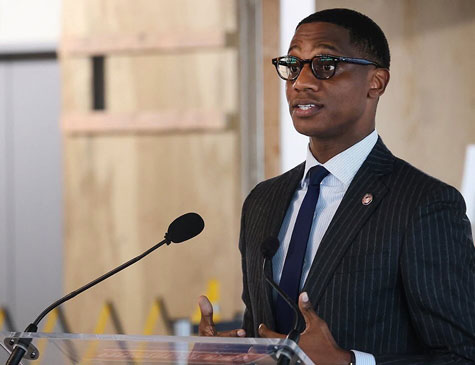
CM: I am interested in those ready job sites. If I'm a developer who potentially wants to take advantage of that program. What does it look like? How are you helping me?
JB: Well, we're helping in a couple of
ways. Number one, we are going to remove the cost that a company might have to turn a brownfield site into a job site that's greenfield, ready to go that you can build on. For a lot of companies, that's a major cost burden to expanding a business,
growing the business or starting a business.
Second, we want to put you in a part of our city, with the right proximity to good talent, from our local workforce to world-class research universities, like Case Western (Reserve University), Cleveland State University and Tri-C. You know, we are sitting on 20% of the world's freshwater. Water is the new oil, and every company in the country — especially when it comes to advanced manufacturing, the rise of the semiconductor industry across the country and right here in Ohio because of Intel setting up shop in Columbus — access to water, access to the utilities is a key part of that equation.
One of the biggest things we’ve also done that’s not talked about enough is our administration has tackled the digital divide head-on. During the pandemic, we were ranked the least connected city in America. Now, with our $20 million ARPA investment, not only are we going to connect up to 50,000 households with high-speed broadband, but we've also attracted another half a billion dollar capital investment to lay fiber in every part of our city. And fiber is going to be the next-generation technology around high-speed internet. That’s going to be great for our households and our families but also for those next-generation startups and companies who want to grow and scale their businesses. So we're laying the foundation to be a vibrant economy and a vibrant city long term.
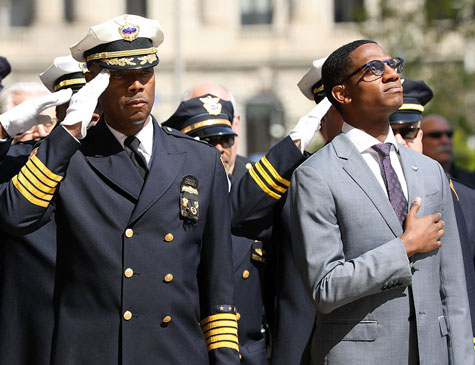
CM: Any salesman knows that perception is key to any sales pitch. Many people have the perception that Downtown is becoming unsafe. How do we change that, and how do we make sure that it’s not true?
JB: I
believe the data speaks for itself. A recent study showed that Downtown Cleveland outranks all of our peers across the state in terms of our Downtown comeback out of the pandemic. When you travel across the country, I would put our Downtown in
the top tier in terms of it being clean and safe for residents, businesses, and tourists, alike. One of the things that I pride myself on as mayor is public safety. Public safety is my first priority, my second priority and my third priority.
Since July, we have seen a double-digit decline in the percentage of homicides in our city. We’ve gotten hundreds of illegal guns off our streets. We’ve made hundreds of felony arrests, targeting repeat trigger pullers. We’ve
made historic investments in our workforce and technology. We’re not sparing any expense to keep our city safe.
I look forward to our forward momentum of progress that we're gonna see Downtown. Just yesterday, I was at the topping-off ceremony for Sherwin-Williams. Not many cities across this country right now are building new skyscrapers Downtown. We are in Cleveland. And it's my goal to make the crane the new official bird of Cleveland, so more to come soon on that soon.
CM: So when we think about something like what happened at Winterland this year (where two teenagers were shot soon after the tree lighting event in Public Square) is there something else that we need to do or something we could have done differently to prevent that?
JB: Well, I'd say two things. We as a state and as a country, have to get serious about tackling this horrible obsession we have with guns and gun culture. I'm a big believer in the Second Amendment, but I believe that the Second
Amendment is not a limitless proposition. And we have a problem with the trafficking of illegal guns in our city. And that's why I'm really excited about the work that we're leading with the ATF (Bureau of Alcohol, Tobacco, Firearms and Explosives)
to make sure that we have an Intelligence Gun Crime Center in Cleveland, so we can stop the trafficking of illegal guns.
But at the same time, it's so important for parents, caregivers and community members to take responsibility for their children. It's not the government's responsibility to raise our children. But it's our responsibility to invest in the infrastructure to support young people, to invest in our law enforcement officers, like we're doing, but we need everybody to step up because we can't do it alone at City Hall.
CM: Recently, you spoke at the Greater Cleveland Partnership's All In Leadership Summit and stressed the importance of private-public partnerships. Why are they so important?
JB: Well, the work we are doing for our shore-to-core strategy couldn’t have been possible without strong public-private partnership. Excited about the work we’re doing with Bedrock and their potential $4 billion investment transforming our riverfront. The work we’re doing with the Browns, the Haslams,
Great Lakes Science Center, the Rock & Roll Hall of Fame to transform our lakefront. GCP has played a large role in getting our work off the ground. To the work we’re doing with the Cleveland Foundation on our $10 million neighborhood
safety endowment fund — no other big city in the country has dedicated ARPA funds to create a permanent source of funding to invest in addressing the root causes of violent crime in our neighborhoods like we have done with the Cleveland Foundation.
What we must continue to work on with the private sector is being more aggressive around retention. We need a more aggressive strategy to compete for new jobs, compete for new companies and to tell our story. That will be a big thing I’ll prioritize in the second half of my first term.
CM: There finally seems to be movement on the waterfront. But we know that our past is littered with failed proposals for waterfront development. What’s different now?
JB: There are a couple of ingredients that make this moment special. Number one, we have a historic amount of funding available from D.C. to Columbus, from the bipartisan infrastructure law to the Strategic Community Investment
Fund and the state legislature that we are actively competing for that will allow us to really finance the big bet we're making for our waterfront.
Secondly, there is a political will to get it done in a way we haven’t seen before, historically in Cleveland and Cuyahoga County. From the suburban mayors, who all touch our waterfront, to the vision that the county executive has, in terms of making Cleveland the freshwater capital of America, to the fact that when I visited Sec. of Transportation Pete Buttigieg — I call him Mayor Pete, by the way — he said, ‘Mayor Bibb your city, especially Lake Erie, screams infrastructure, infrastructure, infrastructure.’ So I think there's great political will.
Third, people are finally seeing this investment as an opportunity to heal our city once and for all. When I was growing up, the lakefront and the riverfront was the dividing line between East Side and West Side, Black and white. As we reflect on the racial reckoning that we saw in this nation coming out of the murder of George Floyd to the pandemic of 2020, we have an opportunity to make Lake Erie and the riverfront a place of healing, where everyone is a clear winner and feels seen.
CM: What’s the latest on the West Side Market?
JB: We originally wanted to allocate $20 million ARPA funds to support the transformation of the West Side Market. City Council amended that to allow for $10 million. But there is a possibility that we might be able
to get an additional $10 million for the West Side Market here relatively soon to get to our $20 million investment goal.
Secondly, we hired the first-ever newly minted executive director of the West Side Market Rosemary Mudry, who's already taken the helm and is hiring for new talent to take over and manage that assets. And we are in negotiations right now on the new lease for the West Side market with our administration and city council. So we've made a lot of great progress in just two years to build a long term foundation to transform that asset to one of the best public food halls in the country.
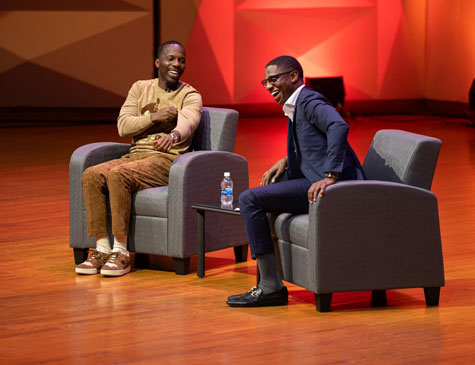
CM: Where do you see bright spots in our city’s culture?
JB: The culture of our city is the soul of our city. There’s an excitement about Cleveland culture because we are creating the culture
as we speak. Look at (Cleveland native) Rich Paul with Klutch Sports.
He’s changing the culture of sports and fashion. The work that you see being done with local fashion brands, like Layr. Cent’s Pizza, a brand new pizza shop in Ohio City, to Comfort CLE, a new soul food spot in Glenville.
I’m really excited about the vibrancy that we have in our food, culture and art scene. And it’s all being done by a new generation of the creative class. They give us a lot of hope for the future.
CM: Why should you get a second term as mayor?
JB: We have much more work to do to execute our vision for this great city. It’s gonna take time to see our projects to fruition. In just two years, we’ve
made progress that will have a long-lasting impact on our city. I’m optimistic we’ll be successful in two years when it’s time to run for reelection. But I believe that every day I have is an opportunity to make this city
better.
CM: Because of your age and your work on the national stage, some wonder what you’ll do next, run for higher office or work in the private sector. What are your ambitions after the mayorship?
JB: I want to become a DJ! That’s on the to-do list. But no, I haven’t given anything much thought beyond, you know, finishing very strong, running through the tape on my first term and building a coalition and broadening that coalition
as we prepare for the campaign in 2025. God willing, the voters will give me another four years to do the people’s work. After that, we’ll go from there.
CM: So you say you want to be a DJ…
JB: I’m looking at turntables already.
CM: What would be your DJ name? DJ J Bibb? DJ Mayor Bibb?
JB: Maybe DJ 58, because I’m the 58th mayor. That might work.
Lightning Round
Place that makes you feel like you’re in Cleveland: Mount Pleasant BBQ.
Favorite pair of socks: Classic monogrammed socks.
Favorite holiday tradition: After Thanksgiving, to kick off the holiday season, we always watch This Christmas with some carrot cake. That's the go-to.
Song that gets you pumped: "Dreams and Nightmares" by Meek Mill.
Bucket list: Wine tasting in Cape Town South Africa, which just became a sister city.
First thing you think about when you wake up in the morning: What’s my schedule look like? Too many meetings.
Ideal vacation: No phone. A good book and a good cocktail.
Book that Inspires You: The Autobiography of Malcolm X.
What you hope people remember you for: My energy, my passion and my dedication to always doing what's right for the city.
For more updates about Cleveland, sign up for our Cleveland Magazine Daily newsletter, delivered to your inbox six times a week.
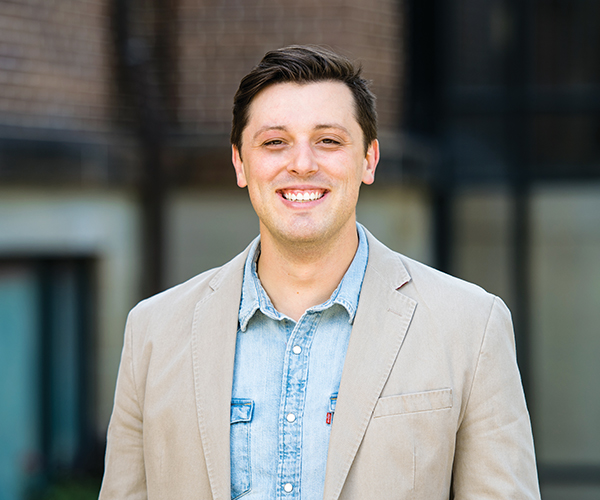
Dillon Stewart
Dillon Stewart is the editor of Cleveland Magazine. He studied web and magazine writing at Ohio University's E.W. Scripps School of Journalism and got his start as a Cleveland Magazine intern. His mission is to bring the storytelling, voice, beauty and quality of legacy print magazines into the digital age. He's always hungry for a great story about life in Northeast Ohio and beyond.
Trending
-
1
-
2
-
3
-
4
-
5










